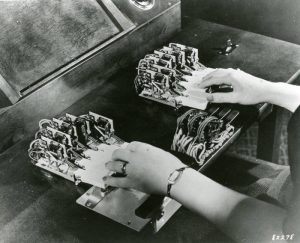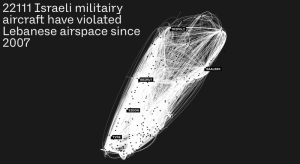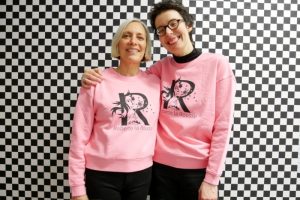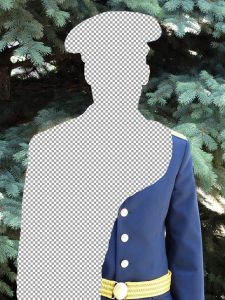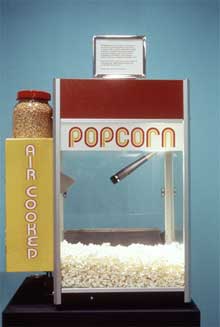 A microphone in the cabinet of the Talking Popcorn machine picks up sound of popping corn, and a computer in the pedestal runs a program that translates the popping sounds according to the patterns and dictates of Morse Code. A computer-generated voice provides a simultaneous spoken translation.
A microphone in the cabinet of the Talking Popcorn machine picks up sound of popping corn, and a computer in the pedestal runs a program that translates the popping sounds according to the patterns and dictates of Morse Code. A computer-generated voice provides a simultaneous spoken translation.
Since Morse code is a system of long and short sounds, and popcorn only pops in short sounds, the challenge was to overcome the disparity. “I remembered that the doomed sailors on the Russian submarine Kursk had tried tapping out messages on the hull,” writes Nina Katchadourian. “If this was possible, it must be a matter of pacing the knocking differently in order to communicate long/short marks. This is in fact what Talking Popcorn does: it listens to a series of pops in a group, taking a running average of the amount of silence that follows each pop, and then designates each of those pops as a dot or a dash. Measuring the lengths of silence in groups also helps account for the acceleration that happens as the kernels heat up and pop and peak speed and density.”
See also Nina Katchadourian‘ Office Semaphore.
Thanks Christine!
UPDATE: as Fereshteh Toosi mentions in the comment is part of a show called In Words: The Art of Language at the University of Delaware. It’s open until 21 March 2007. Katchadourian will give a public lecture about it on Thursday 22 February at 4:00 pm.

